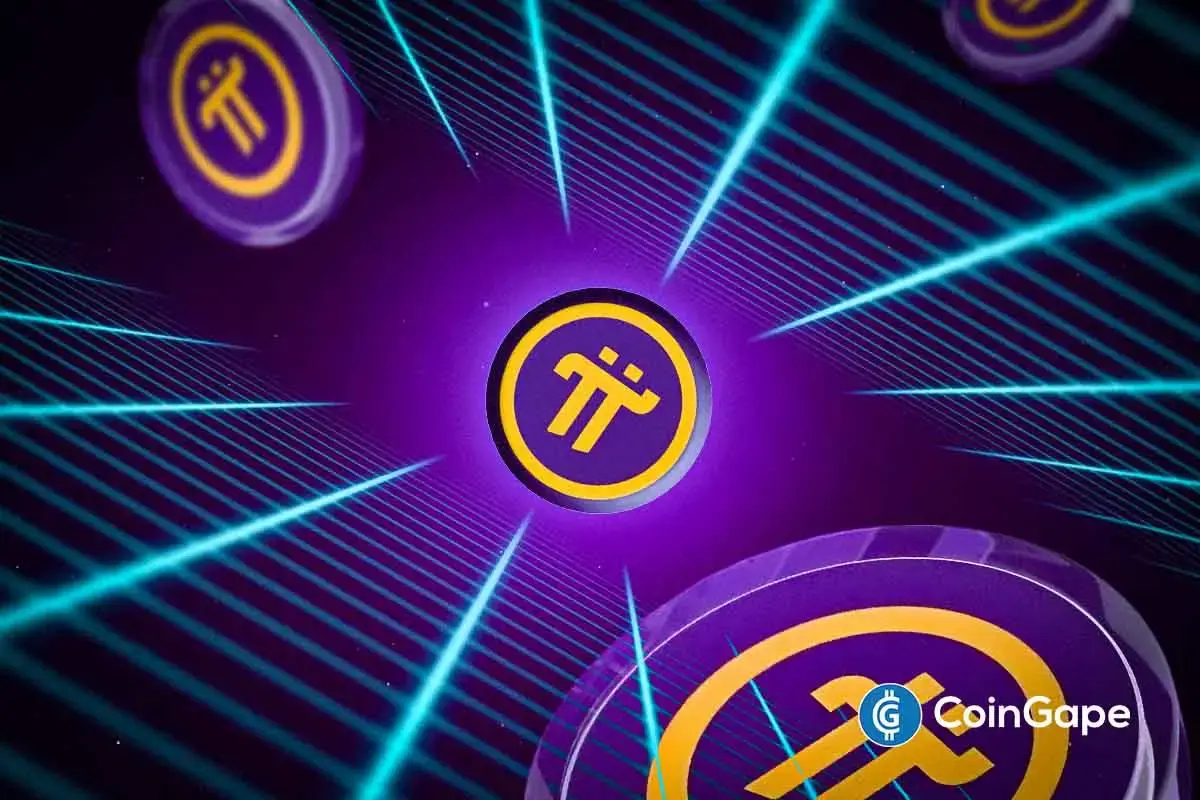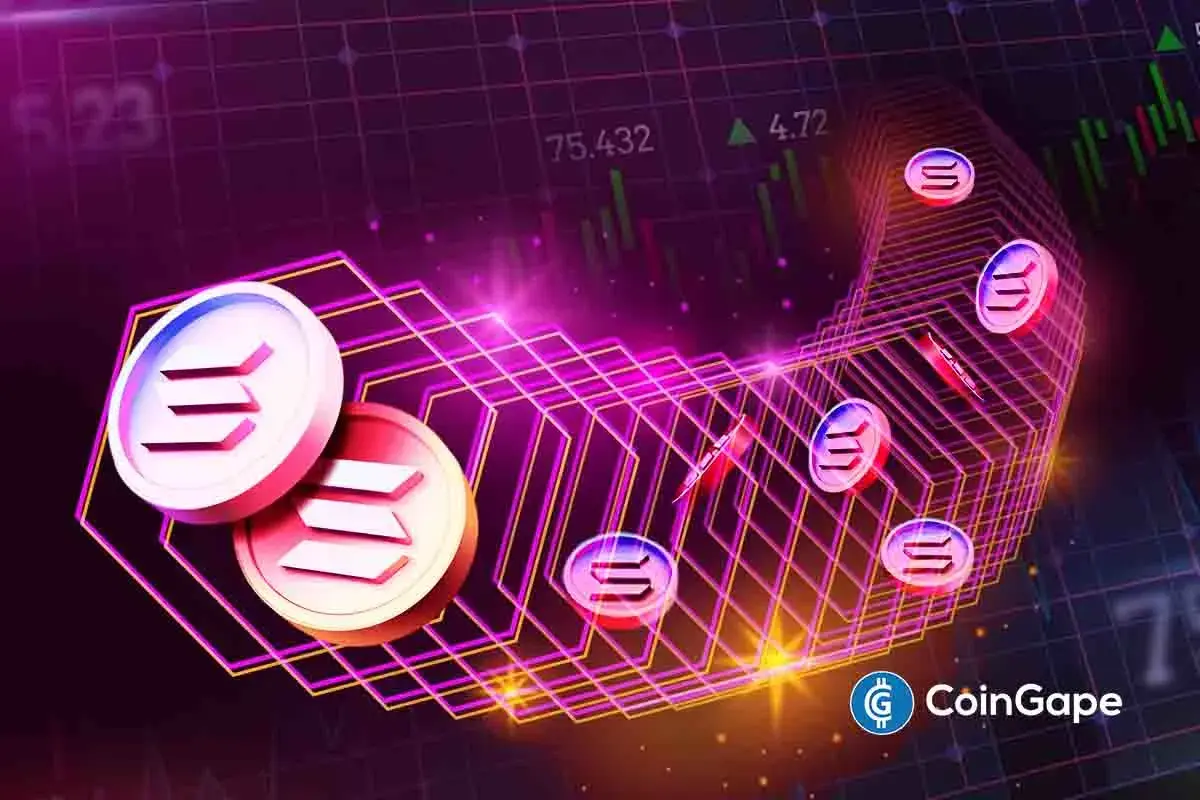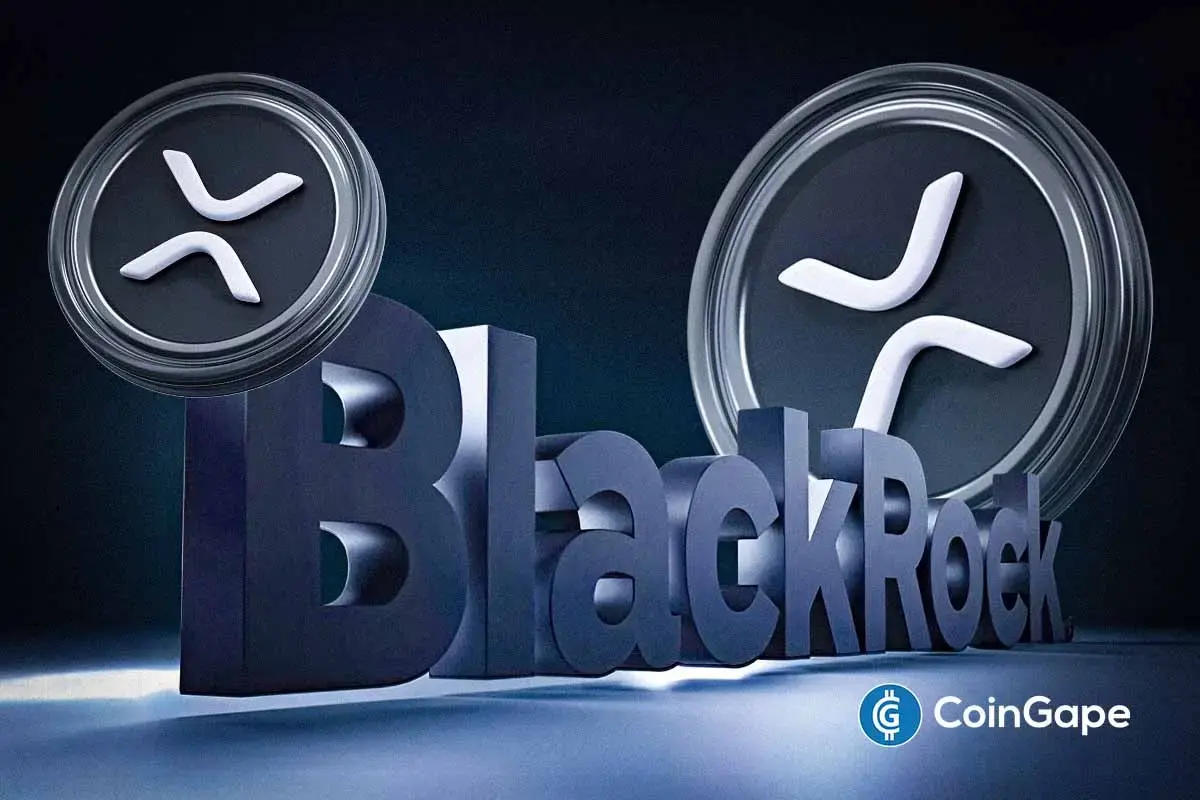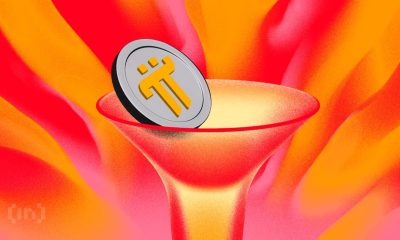Altcoin
ZK Price Plummets 5% Amid $113M zkSync Token Airdrop Sell-Off

The price of ZK has plummeted by 5% amid a significant sell-off following the $113 million zkSync token airdrop. Since the day of the listing, numerous sell-offs have occurred, heavily impacting the token’s value and leading to a series of price dips. This development highlights the volatile nature of the cryptocurrency market and raises concerns about the immediate future of ZK.
Massive Sell-Off Statistics and Market Data
The launch of ZKsync’s airdrop program has seen a flurry of activity among recipients, according to data from blockchain analytics firm Nansen. Since applications opened for the ZK token airdrop, a significant portion of the top 10,000 recipients have opted to sell their newly acquired tokens.
A detailed analysis reveals diverse responses to the airdrop. Approximately 25.6% of the top recipients have chosen to hold onto their entire airdropped allocation, neither selling nor moving their ZK tokens. Meanwhile, 34.5% have taken a more measured approach, selling or transferring a portion of their airdropped tokens while retaining the rest. However, nearly 40% of the top recipients, 39.9% to be precise, have chosen to cash out completely, selling or moving all of their airdropped ZK tokens.


The substantial selling pressure from the airdrop has not gone unnoticed in the market. At the time of writing, the ZKsync token (ZK) price is trading at $0.2148, with a 24-hour trading volume of an impressive $626.9 million. Despite this high liquidity, the token’s price has experienced a 5.01% decline over the past 24 hours.
With a circulating supply of 3.7 billion ZK tokens, the project currently boasts a market capitalization of $799.6 million. These figures underscore the significant market activity and substantial impact that the ZK airdrop has had on the token’s trading dynamics, highlighting the influence of such events on the broader cryptocurrency landscape.
Also Read: VanEck Bitcoin ETF Debuts on Australian Stock Exchange ASX, Will It Get US-Like Response?
Market Reactions and Challenges
The ZKsync token airdrop led to a significant price drop due to large-scale selling. Data that was released few hours after the token went main stream shows that around 40% of recipients sold their entire allocation, while another 34.5% sold a portion. Less than 26% held onto their tokens after the airdrop, further devaluing the token.
The situation was exacerbated by potential Sybil attacks, where individuals created multiple fake identities to receive more tokens. Although some projects have strict measures against this, ZKsync’s approach was less restrictive, which may have contributed to the token flood.
Despite the market turbulence, ZKsync plans to distribute 3.67 billion tokens to over 695,232 addresses, with the top 10,000 wallets receiving only 1.44% of the total allocation. This broad distribution aims to increase the token’s reach, but it also poses challenges in maintaining price stability with high trading volumes.
Also Read: XRP Price Forecast: Whales Shift 52M Coins Amid Price Recovery
The presented content may include the personal opinion of the author and is subject to market condition. Do your market research before investing in cryptocurrencies. The author or the publication does not hold any responsibility for your personal financial loss.
Altcoin
Expert Reveals Pi Network’s Team Efforts To Stabilize Price Amid Token Unlocks

Crypto expert Dr. Altcoin has revealed the efforts that the Pi network team has made so far to help stabilize the Pi coin price. The expert explained that this is the reason why the altcoin has been able to stay above the $0.63 support level, rather than dropping to new lows following the recent token unlocks.
Expert Reveals How Pi Network Team Has Helped Stabilize Pi Coin Price
In an X post, Dr. Altcoin revealed that the Pi Network team has already implemented a strategy to absorb the extra Pi supply entering Centralized Exchanges (CEXs) to help stabilize the Pi coin price. He remarked that it has worked so far, seeing as the price has stabilized.
The expert made this revelation while explaining why the Pi coin hasn’t dropped to $0.30 or even lower amid the large volume of unlocked Pi. Instead, the coin has held above the $0.60 support.
Dr. Altcoin asserted that this move from the Pi Core Team proves that the project is not just another pump-and-dump project and that the coin is here to stay and lead. The expert admitted that he and the entire Pi community remain disappointed with the current price and the team’s ongoing lack of communication.
However, he hopes that the team resolves this soon. The expert also affirmed that the Pi Network has remained successful, consistently ranking in the top 30 crypto by market cap. He also stated that the recent strategy by the Pi Core Team to manage the influx of Pi is a clear sign of their long-term vision for the project.
It is worth mentioning that the expert also recently mentioned that the Consensus 2025 conference is pivotal for Pi’s ecosystem. He believes this is an avenue for the team to promote the project.
Pi Coin Price To Still Reach $314
In his post, Dr. Altcoin also stated that he believes that the Pi Network’s price can still reach $314 within the next five years. He added that he has never been more confident in the project’s future than he is today.
In line with this, he urged all Pi community members to continue supporting the project and keep buying the altcoin while it is still cheap. Community members look to be actively accumulating at the moment. As CoinGape reported, whales recently moved over 41 million Pi coins off exchanges, providing a bullish outlook for Pi Network’s price.
In the short term, crypto analysts like Moon Jeff predicted that the Pi coin price could reclaim the $1 level and rally to as high as $5 soon. A listing by a top crypto exchange could undoubtedly send the altcoin to new highs. CoinGape recently reported that the HTX exchange has hinted at a potential listing of the altcoin.
Disclaimer: The presented content may include the personal opinion of the author and is subject to market condition. Do your market research before investing in cryptocurrencies. The author or the publication does not hold any responsibility for your personal financial loss.
Altcoin
PancakeSwap Sets Date for CAKE 3.0 Amid Community Concern

PancakeSwap, the largest decentralized exchange (DEX) on BNB Chain, has officially announced the implementation of CAKE Tokenomics 3.0. This marks a major shift toward a more sustainable and deflationary ecosystem.
According to the announcement, PancakeSwap will begin rolling out the new tokenomics model on April 23, 2025. The main goals are to curb CAKE inflation, optimize system efficiency, and deliver long-term value to the community. However, the CAKE 3.0 proposal has sparked considerable debate.
What Are the Key Changes in CAKE Tokenomics 3.0?
PancakeSwap has set three primary goals for Tokenomics 3.0: achieve an annual deflation rate of 4%, eliminate complex mechanisms such as veCAKE, and reduce CAKE emissions to improve sustainability.
Here are the specific changes:
- Retirement of CAKE Staking, veCAKE, Gauges Voting, Revenue Sharing, and Farm Boosting: PancakeSwap will discontinue CAKE staking and the veCAKE mechanism, which required users to lock tokens in exchange for voting rights or benefits. All locked CAKE and veCAKE will be unlocked.
- Burn Mechanism to Reduce Circulating Supply: PancakeSwap will burn tokens to reduce supply instead of sharing trading fees with users. The team expects to burn approximately 5.3 million CAKE annually, supporting the deflation target.
- Phased Reduction in CAKE Emissions: Daily CAKE emissions will be reduced from 29,000 to 20,000, and later to 14,500 tokens.
Users will have six months from April 23, 2025, to withdraw their previously locked CAKE.
The Debate Around CAKE 3.0
Several developers and community members believe CAKE Tokenomics 3.0 will benefit the project in the long term.
“At its core, CAKE Tokenomics 3.0 defends true value and protects CAKE holders by strengthening long-term fundamentals—such as aggressively cutting emissions to accelerate deflation and sustainably grow value,” Chef Philip said.
However, not everyone agrees. Cakepie DAO—one of the largest veCAKE holders—voiced strong concerns on X. They criticized the decision to eliminate veCAKE, calling it non-transparent and potentially damaging to projects built around that model.
This reveals a divide in the community over how PancakeSwap is balancing deflation and stakeholder interests.
“Sunsetting veCAKE would be devastating for Cakepie and for every project built on long-term alignment with PancakeSwap. Our entire ecosystem is structured around veCAKE, with millions of CAKE locked for four years as a clear show of commitment. Removing veCAKE would erase that commitment overnight and undermine the trust and efforts of all builders who believed in PancakeSwap’s vision,” Cakepie stated.
In response, PancakeSwap proposed a $1.5 million compensation package in CAKE tokens. They offered this to CKP (Cakepie’s token) holders if Cakepie agreed to allow a 1:1 swap from mCAKE (Cakepie’s CAKE derivative) to CAKE.
However, Cakepie is currently voting on whether to accept the offer.

At the time of reporting, CAKE is trading around $1.97, up 17% since April 8, when PancakeSwap first proposed Tokenomics 3.0.
Additionally, data from DeFiLlama shows that PancakeSwap’s 24-hour trading volume has surpassed $1 billion, overtaking Uniswap.
Meanwhile, a report from BeInCrypto reveals that PancakeSwap controls over 90% of the DEX market share on BNB Chain. This highlights the strong relationship between BNB Chain and PancakeSwap.
Disclaimer
In adherence to the Trust Project guidelines, BeInCrypto is committed to unbiased, transparent reporting. This news article aims to provide accurate, timely information. However, readers are advised to verify facts independently and consult with a professional before making any decisions based on this content. Please note that our Terms and Conditions, Privacy Policy, and Disclaimers have been updated.
Altcoin
Top Solana Price Levels to Watch in the Short Term

As the crypto market is experiencing a bullish reversal with its total market cap surging by 3.17% to $2.74 trillion, the Solana price is gearing up for a potential rebound. As traders and investors are looking to capitalize on the token’s volatility, analysts unveil key price levels to watch in short term.
Notably, analysts like Ted predict SOL’s potential uptick to $180 amidst increasing whale activity. In this article, we’ll explore the top Solana price levels to watch in the short term which will help you to stay ahead of the curve and capitalize on market opportunities.
Solana Price To Rebound: Key Price Levels Revealed
As the Solana price hovers below $140, analysts and traders are closely watching market movements. While bears fear of a possible crash to $120, analysts like Ted offers a bullish outlook, predicting SOL’s potential surge to $180 by May 2025.
Presenting historical trends, Ted asserts that the Solana price is poised to reach $160-$180. He notes that Solana’s current patterns mirror those seen in 2022 Q4, suggesting potential similarities in future price movements. In addition, the analyst maintains a bullish outlook for the token, predicting a new all-time high for SOL during the third quarter of this year.
Key Price Levels To Watch
While Solana is poised for a potential rebound, traders are recommended to watch key price levels. Analyst Degen Hardy presents a detailed analysis of SOL’s current market conditions where he is trying to identify a long entry opportunity. As per his conclusions, the ideal scenario will be the Solana price to pull back, which, in turn, will form an inverse head and shoulders pattern.
Significantly, the chart presented by the trader represents key levels to watch. As SOL has surged past the significant support level of $125 and the resistance level of $135, the next target is $178.


As of now, SOL is trading at $139.23, up 2.15%.Over the past week and month, Solana has experienced a surge of 3.25% and 6.6%, respectively. Historical data suggests that Solana price could ultimately reach $256 if it surges past $178. The key levels in between $178 and $256 include $199, $216, and $238.
Moreover, increased whale activity also projects a potential rebound in Solana’s price. Whale Alert revealed that a Binance address moved 374,161 SOL ($52,768,341) to an unknown wallet.
SOL Clears Key Resistance: What’s Next
In his recent X post, TraderAG projected Solana price’s potential target of $170 as it has broken past its key resistance level at $135-$137. Though the analyst expected a retest to the $125 level, SOL broke past the resistance zone, sparking speculations of an uptrend.
According to TraderAG, SOL is capable of reaching $170 and beyond in the near term. CoinGape’s Solana price prediction reveals that SOL is expected to reach a maximum level of $173.44 and a minimum of $140.04 in 2025.
Disclaimer: The presented content may include the personal opinion of the author and is subject to market condition. Do your market research before investing in cryptocurrencies. The author or the publication does not hold any responsibility for your personal financial loss.
-

 Market23 hours ago
Market23 hours agoWill XRP Break Support and Drop Below $2?
-

 Bitcoin13 hours ago
Bitcoin13 hours agoUS Economic Indicators to Watch & Potential Impact on Bitcoin
-

 Bitcoin22 hours ago
Bitcoin22 hours agoBitcoin LTH Selling Pressure Hits Yearly Low — Bull Market Ready For Take Off?
-

 Bitcoin19 hours ago
Bitcoin19 hours agoHere Are The Bitcoin Levels To Watch For The Short Term
-

 Market16 hours ago
Market16 hours agoBitcoin Price Breakout In Progress—Momentum Builds Above Resistance
-

 Market13 hours ago
Market13 hours agoVitalik Buterin Proposes to Replace EVM with RISC-V
-

 Altcoin11 hours ago
Altcoin11 hours agoExpert Reveals Why BlackRock Hasn’t Pushed for an XRP ETF
-

 Altcoin16 hours ago
Altcoin16 hours agoExpert Says Solana Price To $2,000 Is Within Reach, Here’s How

















✓ Share: